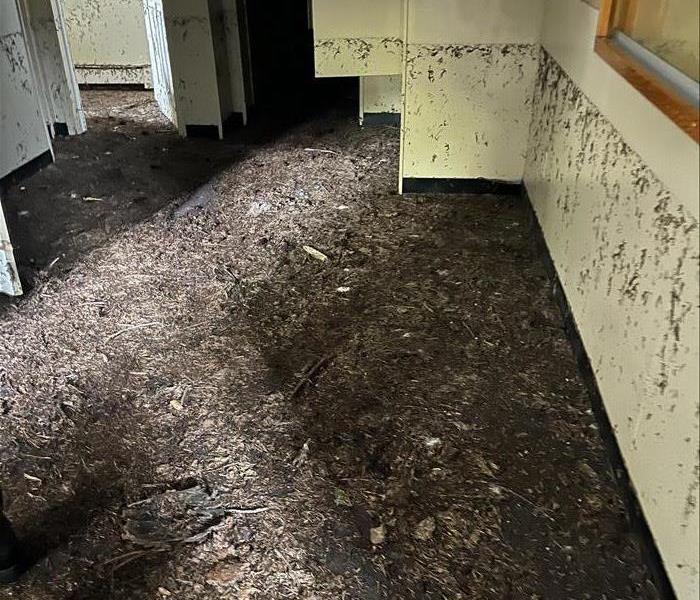Tenant and Landlord Responsibilities for Mold Prevention in Rental Properties
11/15/2024 (Permalink)
Mold is a common issue in rental properties, often caused by moisture and inadequate ventilation. When mold appears, it’s important to address it quickly to prevent damage and ensure a safe living environment. Both tenants and landlords play a role in preventing and managing mold growth, and understanding these responsibilities can help keep the property safe and well-maintained.
Tenant Responsibilities
Tenants play a significant role in preventing mold by maintaining a clean and well-ventilated living space. While landlords are responsible for structural issues, tenants need to take everyday precautions to avoid creating an environment where mold can thrive.
- Report Water Damage Promptly: Mold thrives in damp areas, often caused by leaks or water damage. If a tenant notices any leaks, condensation, or damp areas in the property, they should immediately notify the landlord. This helps prevent mold from taking root in areas like ceilings, walls, or floors.
- Proper Ventilation: Tenants should ensure that areas prone to moisture, such as bathrooms and kitchens, are properly ventilated. This can be as simple as using exhaust fans, opening windows, or wiping down damp surfaces to reduce humidity levels in these spaces.
- Regular Cleaning: Keeping areas like bathrooms, kitchens, and laundry rooms clean and dry is essential in preventing mold. Mold can grow on various surfaces, including tile, wood, and fabric, if left unchecked. Tenants should also keep furniture away from walls to promote airflow and reduce condensation buildup.
- Avoid Overwatering Indoor Plants: Mold can develop in damp soil, which can spread to nearby areas in the home. Tenants should be cautious when watering indoor plants and ensure that water doesn’t pool on floors or furniture.
Landlord Responsibilities
Landlords have a legal obligation to provide a habitable living space, which includes addressing mold issues that stem from structural problems, leaks, or poor maintenance. Failing to address mold problems can lead to property damage, tenant dissatisfaction, or even legal action.
- Respond to Maintenance Requests Quickly: If a tenant reports a water leak, condensation, or signs of mold, landlords must respond promptly. Ignoring these issues can lead to further damage.
- Maintain Building Structures: Mold growth often occurs due to faulty structures, such as leaky roofs, damaged plumbing, or poor ventilation systems. Landlords should regularly inspect and maintain the property to prevent moisture from seeping into walls, ceilings, or floors.
- Professional Mold Remediation: If mold becomes a serious issue, landlords should seek the services of professionals like SERVPRO®. Attempting to handle mold without the proper equipment or expertise can result in incomplete removal or the spread of spores to other areas. SERVPRO provides thorough mold remediation services, ensuring that the problem is fully addressed and doesn’t return.
- Install Proper Ventilation: Landlords can help prevent mold by ensuring that bathrooms, kitchens, and laundry areas are properly ventilated. Installing exhaust fans or making sure windows can open will help tenants manage moisture levels.
Working Together to Prevent Mold
Mold prevention is a shared responsibility. Tenants should practice good cleaning habits and promptly report any signs of water damage or mold, while landlords need to act quickly and ensure that the property is well-maintained. Working together not only prevents mold but also ensures a positive tenant-landlord relationship.
When mold does appear, it’s essential to act quickly and involve professionals like SERVPRO of Marina Del Rey/Westchester/El Segundo. With advanced mold remediation techniques, SERVPRO can safely remove mold from rental properties and help identify any underlying moisture problems. By addressing the issue at its source, SERVPRO ensures that mold is eliminated and prevented from returning, protecting both the property and its occupants.

 24/7 Emergency Service
24/7 Emergency Service
